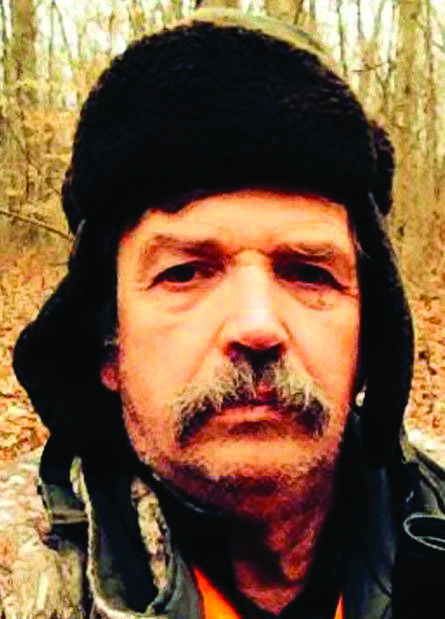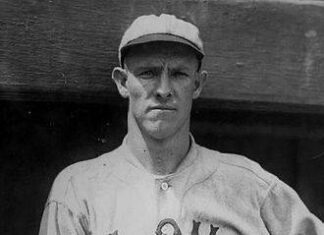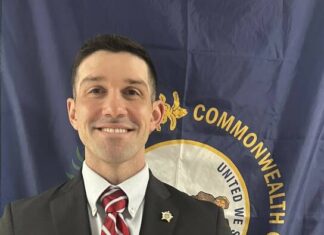November 23, the last Saturday of modern gun deer season, but this is the first time I have hunted in my high woods Sanctuary. It is early as I begin the first sharp ascent over the ground that took my wind and leg strength 12 years ago and first warned me that something had changed for the worse inside me. There are no failures of breath or endurance now as I search for the trail in the dim light. It is early but not as early as deer hunters like to begin their treks to hunting sites, so I can see to navigate through the low brush, thicker than I remember it.
I am doing what I can rather than what I should do as the best hunting strategy. Gone are the days when I would climb the bluff up from along Garrett Run Road in the dark to get to the stand that Vernon “Buddy” Burton helped me build in 1994. That route was much less apt to spook deer as they moved higher from their night haunts in the bottomland than the one I am taking. The stand, in a circular stool of linden trunks, helped me kill a buck that year and for the following three, and it gave me a setting for Levi Winston’s fictional ordeal in my story “Levi’s Deer”. The wooden stand is long defunct and I will be sitting on the ground during this hunt.
It is the annual time of bronze and I am going to a place of bronze because that is where food is this season for game animals that depend on acorns: squirrels, turkeys, and deer. From late October through November the “red” oaks—Northern reds, scarlets, and Shumard’s—turn bronze and hold their leaves as beacons that signal us where we should hunt. There are few happier places than a stand of red oaks in an autumn when a good crop of their acorns have completed their 18-month growing cycle to lie upon the bed of the fallen leaves that have nourished them and to make their steady drop sounds on earth as breezes and squirrels dislodge them.
I would like to shoot a buck but desire to go to the Sanctuary more than I wish to kill. I have passed through its grand old growth woods only once this fall in mid-October when most of the foliage was still hanging. Using the riflescope I was able to see acorns on many of the large oaks, so I know I am going toward mast. The trek up the point seems steeper and longer with each passing season upon my legs, and I know time is taking one of my dearest possessions from me by making it increasingly difficult to enjoy. Hunting the bottomlands from my comfortable blind is easy and productive, but four walls and a view of an open meadow do not have the charm of feeling an oak against my back, of hearing the whisk of falling leaves, and of seeing oak bronze glistening overhead.
I have climbed far into the big woods before I see a gray squirrel run up an oak from the ground. It disappears around the tree as it ascends. Farther along I find a fallen oak with a standing tree beside it that makes a convenient place to stop, sit, and watch the basin of the little drain and its east slope from a position of semi-concealment. I am on my old hunting ground, the heart of the Sanctuary. I see that my stand is completely fallen, the linden supports are rotted stumps, and the ladder leans against one stump in an askew angle. There are acorns on the ground, small disturbances in the leaf carpet where deer have nosed for acorns, and a large area of heaped-up leaves turkeys have made in searching for the prized oak fruit. I have been seeing a flock of fifteen gobblers down in the bottomlands. Wind wafts through the woods, rustles clinging oak leaves, nudging some to fall, and bringing sporadic acorn drops. “Who are the spirits in this autumn wind?” I think. “In life did I know and love some of them? Will I return here with the wind in these days of bronze, to add my plaints in wind-drone and leaf sighs?”
My vigil is not long before I spot a deer high on the east side of the drain. I put the scope on it and see that it is a doe. Two others appear behind the first. They are smaller, likely the doe’s youngsters, and probably the trio I have been seeing emerge from the woods most evenings and browse in the open east of my stand. I have no desire to shoot these deer but I remain still to let them cross the drain and work around above me without alarm. After they are gone from sight in the trees, one of the youngsters oddly returns to walk within ten yards of me and mill about before going back toward the others.
My next visitors are a flock of eleven turkey hens and youngsters, a group I have not spotted before, so this is a welcome surprise. They come in from below, travelling the basin of the drain until they pass above and around me in the same direction the three deer have gone.
After the turkeys leave and their shuffling and chatter fades, the image of a stationary deer coalesces in the thick woods on top of the east slope. It seems to be looking directly at me, curious but not alarmed. I cannot see antlers, but when it breaks stance and moves forward down the drain slope, I think I spot a rack, and the scope confirms there is a small one. The buck moves up right in the drain and into trees out of sight before I can get the crosshairs on it.
I see no other game, but my return to the Sanctuary has been an exciting trek of wildlife viewing. But seeing only one squirrel is a disappointment. I also feel mild frustration in not being able to shoot the buck. It would have been the first from the Sanctuary in fourteen seasons and could well have been the last chance to take a buck here I will ever have.






